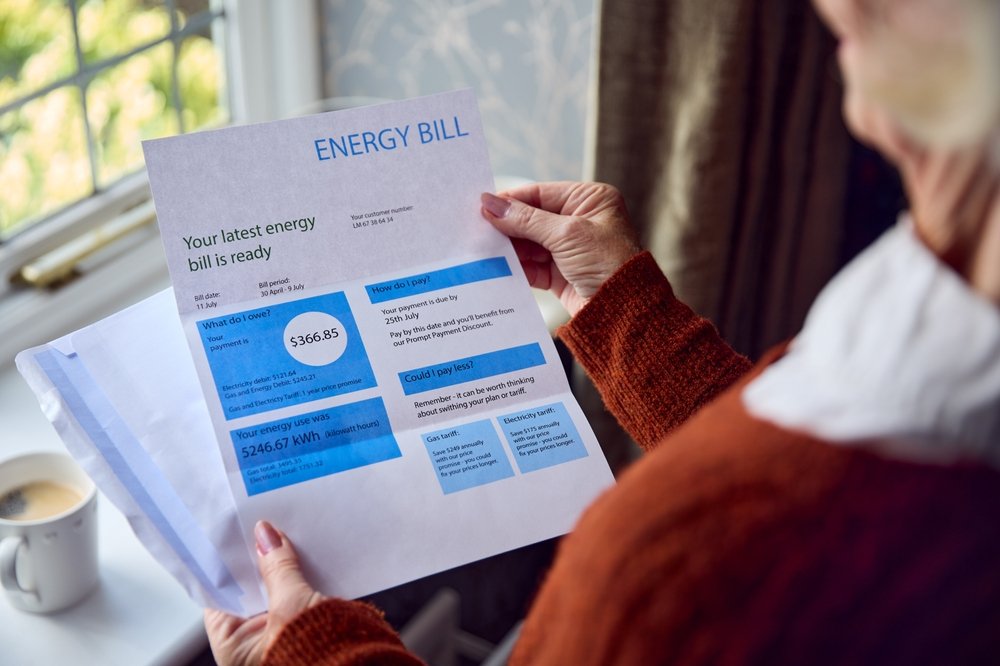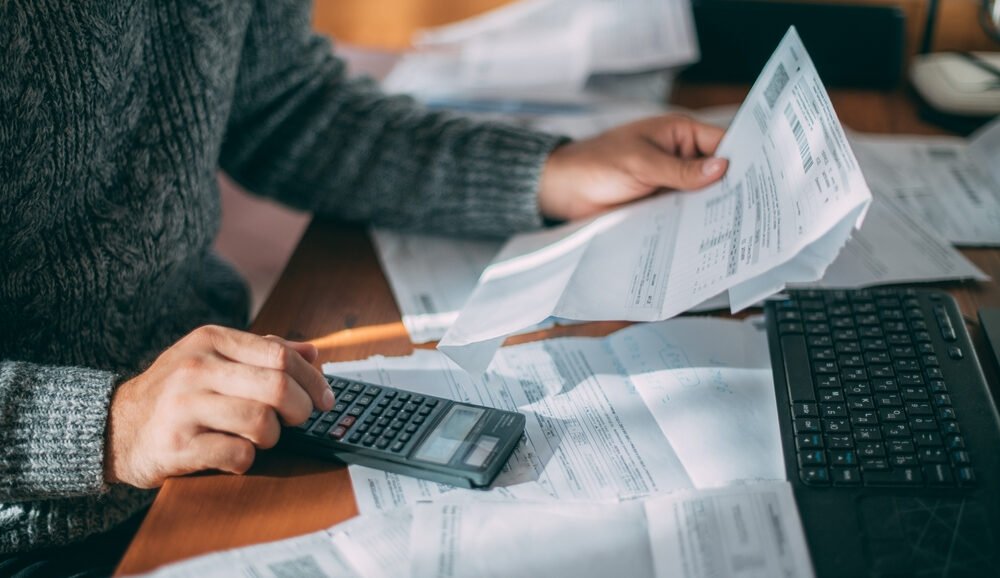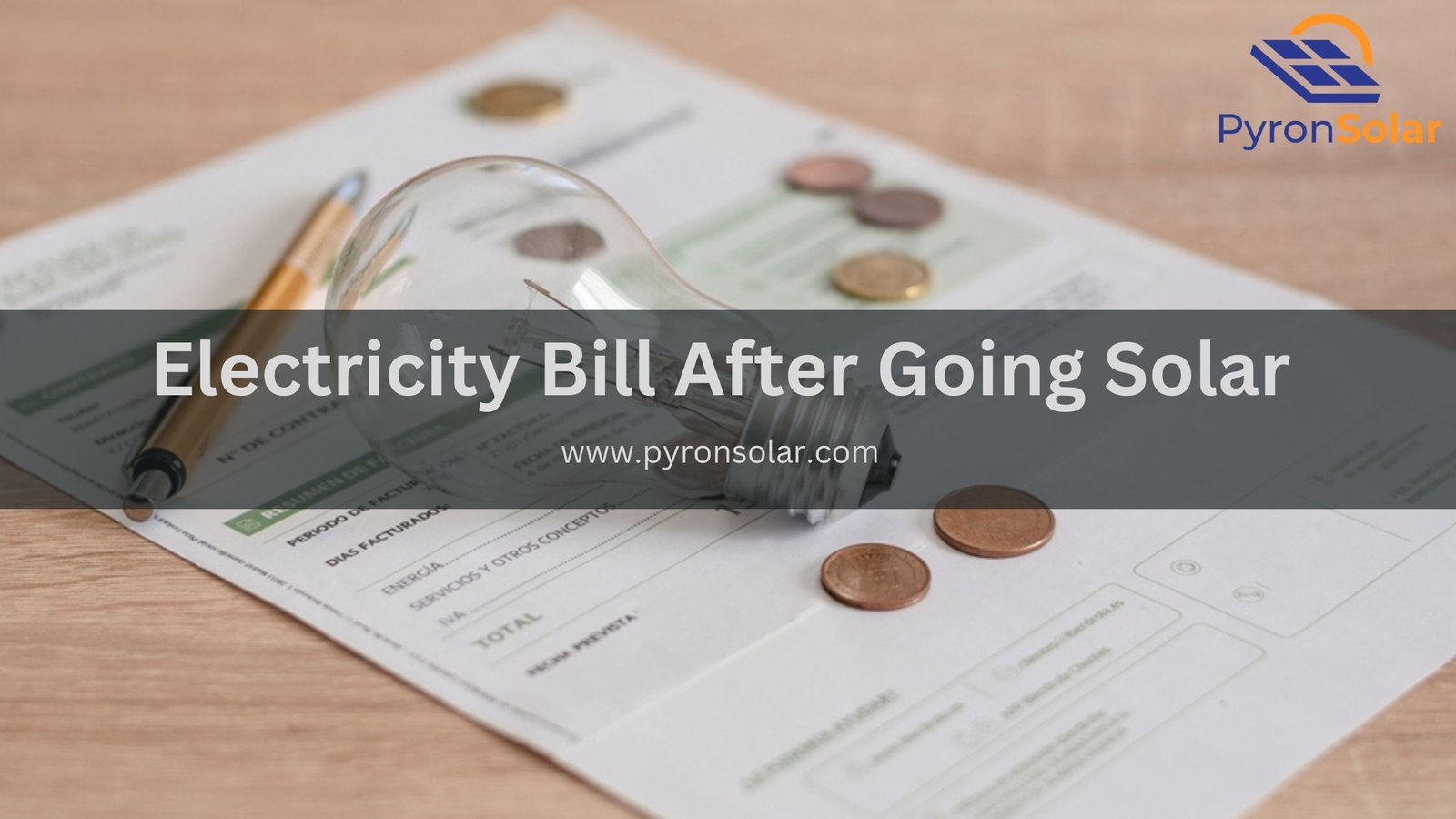Yes, You will still have an electricity bill after going solar. However, the amount on your monthly bills will be either reduced or negative. It is because solar panels not only generate electricity but also minimize the cost of purchasing electricity grid from your service provider.
In this article, you will explore several reasons why you will still have an electricity bill even after installing solar panels by understanding the dependence on the grid during nights and cloudy days. Also, you will understand what is meant by utility service charges and the absence of net metering that leads to higher electricity bills. Mainly, you will find out the important factors that influence the savings on your electricity bills by considering the System’s Performance Issues and energy Consumption and adjusting the billing cycles. Furthermore, you will understand the difference between solar and electricity bills.
Reasons Why You Still Have an Electricity Bill After Going Solar

These are the basic reasons why homeowners still receive an electricity bill even after preferring solar panels:
- Household energy consumption outmatches the production of solar energy.
- Electricity requirements during the night or cloudy days
- Utility service charges when the solar panels are connected to the grid.
- If the battery storage system isn’t used.
- Utility company without any net metering program.
Most importantly, you need to pay attention to these important factors that contribute to charges on your electric bills despite using solar panels:
1. Inadequate solar panel size: If your solar panel size is insufficient to meet your energy consumption needs, you might not be able to completely neutralise your electricity usage.
2. Fluctuation in energy rates: The instability in electricity rates can impact your bills. Though solar panels reduce the dependence on the grid, the increase in power rates can result in higher bills and affect the financial benefits of solar panel systems.
3. Power usage strategies: The strategies you use for power consumption play an important role in determining the performance of solar panels. You might have to still depend on the grid to use energy during non-daylight periods which results in higher electricity bills regardless of the solar panels installed.
4. Unsuitable appliances and devices: If your appliances are old or outdated and consume more electricity than the newer models, you might not be able to fully compensate for the higher energy consumption. Consequently, it becomes important to regularly evaluate and upgrade your appliances to enhance the usefulness of your solar panel system.
Cloudy Days and Night Time
It would be impossible to avoid electricity usage during cloudy conditions or nighttime, which makes you use the power from the utility grid. An average homeowner still receives an electricity bill per month even though solar panels operate at their highest efficiency. This intermittency poses a significant limitation of depending only on solar energy and to handle the energy demands several charges are passed to the users through the utility company which will be discussed below in detail…
Utility Service Charges
The Utility service charges are the fixed fees associated with the usage of the electricity grid when the solar panels aren’t generating sufficient power. You will receive a bill that includes various utility charges along with the electricity prices which include:
- Consumer Service Charge: These are the costs related to the meter reading, report maintenance, billing, consumer support and general utility services.
- Distribution Charge: It is the cost of installation and maintaining the power distribution system which includes transformer stations, as well as above-ground and underground power lines.
- Transmission Charge: It minimizes the cost of high-voltage transmitters that can be utilized to distribute power from the generating station to your home.
Additionally, there are fixed monthly charges irrespective of your usage that cover infrastructure and maintenance costs. It includes investment in electrical equipment like transformers, wires, and poles along with the labour charges
Lack of Net Metering
Net metering is a billing scheme that allows residential and commercial users to earn extra credits by selling the excess electricity generated by solar panels and fed back into the grid.
This bidirectional meter records the energy sent by the solar panel to the grid as well as measures the energy consumed by a consumer when the panels aren’t producing adequate power. After each billing period, the utility sums up the overall energy that was transferred to and used from the grid. For instance, if the house owner utilizes more electricity when compared to the supplied amount of energy, then the utility bills make a difference for them. Conversely, if they use more than the transferred amount, the utility records a credit balance that will be applied to the subsequent month’s electricity bill.
However, there are certain scenarios where the absence of net metering can contribute to higher electricity bills as the consumers would not receive any credits which leads to wastage of energy and higher utility bills.
The net metering policies vary across different regions and utility companies. Few regions in the US have shifted from traditional net metering to adopt alternative schemes like Net Billing, Buy-all and sell-all, and Solar self-consumption. As a result, a complex system of per-hour changes in the transfer of credits is modified every month for the cumulative reduction in the extra solar energy credits. This variability in policies can pave opportunities for financial benefits in several states across the US.
What does the electric bill look like after installing solar panels?

Here is a step-by-step guide on how to calculate your electricity bills after installing solar panels:
1. Analyze your electrical usage per day. For instance, you need to pay the cost of 13 kWh from the grid for the daily usage of 19 kWh of electricity as your solar system requires direct power of 6 kWh from your usage.
2. Calculate the solar production by considering your system generating 24 kWh of electricity per day, and then 6 kWh will be used to directly power the electrical appliances in your home. Whereas, the remaining 18 kWh is transmitted onto the grid for the net metering credit rather than the excess costs of the 13 kWh of electricity drawn from the grid during the night.
3. Estimate the direct power required for your home as shown below:
(Total electricity)- (power used daily)= Direct Power required to purchase
=(19 kWh) -(6 kWh)= 13 kWh
4. Understanding about 1:1 Net Metering helps you to calculate the value of excess solar electricity which is the same as the cost paid for grid electricity.
5. Calculate your Monthly bill by considering a simple example of using 260 kWh of electricity per month at the cost of $44 at 17 cents per kWh. Under the 1:1 net metering, the exports are 17 cents per kWh which is worth $82. As your solar system provides half of that electricity, you can import 130 kWh from the grid worth $22.
You can estimate your monthly bill by subtracting the cost of exports from the imports, as shown below:
Monthly electric bill = (Cost of grid electricity imports) – (value of solar exports)
($22)- ($82) = -$60 electricity bill
Before installing solar panels, your electricity bill was $44 and after installation, it would be-$60 with a total increase of $104 ( that is $44- (-$60)).
Factors that impact your electric bill savings
These are the factors that can influence your electricity bills after going for solar panel installation:
1. Electricity Rates of your locality: The electricity cost in your area influences your savings. Higher electricity rates make you save more money by switching to solar energy.
2. Net Metering Policies: By implementing the net metering scheme you can enjoy more savings by claiming monetary credits for every penny of solar power generated and keeping those credits as future savings.
3. Amount of Power Your Home Uses: First, you have to calculate the energy requirements for your home, and then you should know how much power a solar panel can produce. It will help you decide to choose the right solar panel system to use to maximize your savings.
4. Solar Panels Quality: High-quality materials used in the manufacturing of solar panels decide the efficiency and longevity by ensuring enhanced light absorption and minimizing reflection to improve performance with higher conversion rates for generating more electricity from the same amount of sunlight. That’s why It is important to know how to choose best solar panels.
5. Utility Charges: Your solar savings can impact your utility charges. For instance, in California, the income-graduated charges mean that the fixed rates alter based on an individual’s income. In other words, it means that higher-income households are faced with higher charges
6. Peak Sun Hours: It is the specific period of the day when the sun’s intensity is at peak levels for solar panel performance For instance, Arizona typically has 7–8 hours of peak sun hours, whereas Ohio has an average of 2.5-3.5 hours. Using the sun hours calculator, you can determine the maximum sunlight hours for your location.
Why Is Your Bill Too High After Going Solar

There are potential reasons why homeowners face huge electricity despite installing solar panels:
1. Increased power consumption: If your usage is higher than the panel capacity to offset, then your electricity bills could be higher. For example, running your AC for more than the normal duration and using electric vehicles for charging at home.
2. Production Loss: If your consumption levels are normal, then it might be your solar panels that are producing less energy. Also, the soiling loss (also known as dirty panels) or equipment malfunctions can increase your electricity bills. If you find any performance issues by evaluating your software, it is advisable to contact your installer.
3. Small-Sized System: The undersized systems cannot reduce your electricity bills to zero.
4. Poor Scheduling: Typically, the net metering cycle runs in many regions from March to February and the offset production falls completely during winter. If your solar system is installed during such periods, then it wouldn’t be sufficient to offset your electricity bills, and you won’t gain any net metering credits.
System Performance Issues
At times, a solar panel system can face several issues out of which a few are listed below:
- Lower efficiency due to installation errors, object shading, and accumulation of dirt and debris.
- Loose or broken electrical connections.
- Harsh weather conditions like huge winds, hail, and lightning strikes can damage panels and electrical connections of a solar system.
- Malfunctioning in the inverter can cause power losses or fire hazards.
- And several other reasons…
However, a few measures can be taken to address the potential issues and monitor a solar panel system performance:
- Installing a solar monitoring system helps you to analyze the output of your panels and enhances your return on investment. Both solar monitors and panels are installed at the same time.
- Regular maintenance and cleaning by inspecting your panels for wear, micro-cracks or loose connections as well as cleaning the dirt with a soft brush or micro-detergents.
- Some extreme repairs require professional assistance, and it is advisable to plan for an annual inspection for consistent performance.
- Analysis of monitoring data over time can help you to identify long-term changes such as permanent degradation or diminished panel efficiency.
High Energy Consumption
Several reasons like economic and technological developments, increased population, industrialisation, a huge number of electric vehicle ownership and a shift in agriculture from simple to commercial methods have contributed to high energy consumption.
At the same time, solar panel owners can track and manage their energy consumption using solar monitoring systems that help to provide real-time data. It helps users understand the power generated by solar systems at different times and estimate the efficiency.
Adjusting to Net Metering and Billing Cycles
Annual billing cycles are used for long-term services where customers are billed yearly. Typically, in the utility industry, the billing cycle depends upon the type of service. For example, the current bills may be billed monthly whereas the water bills are billed quarterly.
A true-up statement is applicable for “grid-tied” or solar arrays directly connected to the municipal grid that equates all the cumulative energy charges, credits, and compensation for an entire billing cycle. For example, if your solar panel system generated more energy than the entire household consumption during the billing cycle, the utility will provide you with surplus credits. Contrarily, less energy than household usage, makes you depend on the power grid and the utility will charge more for the difference.
Net metering is an electricity pricing scheme that has been highly successful in promoting the widespread deployment of roof-mounted solar systems, which helps users save energy costs, cut down carbon emissions, and enhance energy efficiency. However, disproportionately substituting net metering customers at a retail price can cause a switch from regular to non-regular consumers, thereby increasing the overall price of electricity generation, spacing and transfer.
Conclusion
Solar panel owners can enhance their investment by engaging with utility companies and solar installers. By eliminating shade to receive abundant sunlight, ensuring optimal orientation in the south direction, choose the best quality panels that capture maximum sunlight and reduce waste energy, you can expect optimum results by considering the power demands and purpose.
What are the Solar bill and Electricity bill?
Mainly, you need to understand the clear difference between a solar and an electricity bill. Typically, electricity bills are provided by the utility companies to their customers for power consumed. The essential features of electricity billing include:
- Electricity metering: The electric utilities calculate both real and reactive power. Most importantly, the actual power consumption and energy as its major component comprises a huge portion of the current bill.
- Demand Rate: Also known as the capacity charge, the demand rate expressed in $/kW has been a core part of constructing new generation stations, transmission lines and several other utility capital projects. The demand charges have 40% or more of an industrial customer’s billing per month. On average, the power consumption is set over a time interval of 15, 30 or 60 minutes.
- Energy Consumption: It is a comparison of the total energy used compared to the previous bill and the year before.
On the other side, solar bills are the monthly payments made on the entire solar system. You can pay solar bills with three main methods namely upfront cash payment, solar loan and Lease or Power Purchase Agreement (PPA).
In recent times, the US government has been offering many incentives like the solar tax credit that helps you to recover 30% of solar system installation. Additionally, there are schemes apart from Net metering which include Renewable Electricity Production Tax Credit (PTC), Modified Accelerated Cost-Recovery System (MACRS), Residential Clean Energy Credit, and several other incentive programs to lower the installation costs and maintain a clean solar energy system.
Ray is an avid reader and writer with over 25 years of experience serving various domestic and multinational private and public energy companies in the USA.

